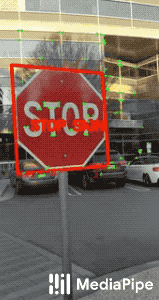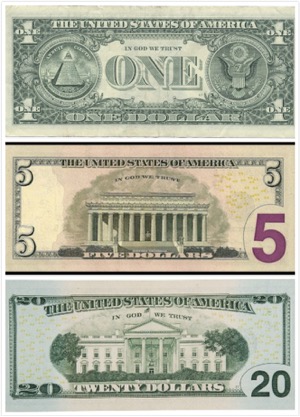149 lines
6.9 KiB
Markdown
149 lines
6.9 KiB
Markdown
---
|
|
layout: default
|
|
title: KNIFT (Template-based Feature Matching)
|
|
parent: Solutions
|
|
nav_order: 13
|
|
---
|
|
|
|
# MediaPipe KNIFT
|
|
{: .no_toc }
|
|
|
|
<details close markdown="block">
|
|
<summary>
|
|
Table of contents
|
|
</summary>
|
|
{: .text-delta }
|
|
1. TOC
|
|
{:toc}
|
|
</details>
|
|
---
|
|
|
|
## Overview
|
|
|
|
MediaPipe KNIFT is a template-based feature matching solution using KNIFT
|
|
(Keypoint Neural Invariant Feature Transform).
|
|
|
|
 |
|
|
:-----------------------------------------------------------------------: |
|
|
*Fig 1. Matching a real Stop Sign with a Stop Sign template using KNIFT.* |
|
|
|
|
In many computer vision applications, a crucial building block is to establish
|
|
reliable correspondences between different views of an object or scene, forming
|
|
the foundation for approaches like template matching, image retrieval and
|
|
structure from motion. Correspondences are usually computed by extracting
|
|
distinctive view-invariant features such as
|
|
[SIFT](https://en.wikipedia.org/wiki/Scale-invariant_feature_transform) or
|
|
[ORB](https://opencv-python-tutroals.readthedocs.io/en/latest/py_tutorials/py_feature2d/py_orb/py_orb.html#orb-in-opencv)
|
|
from images. The ability to reliably establish such correspondences enables
|
|
applications like image stitching to create panoramas or template matching for
|
|
object recognition in videos.
|
|
|
|
KNIFT is a general purpose local feature descriptor similar to SIFT or ORB.
|
|
Likewise, KNIFT is also a compact vector representation of local image patches
|
|
that is invariant to uniform scaling, orientation, and illumination changes.
|
|
However unlike SIFT or ORB, which were engineered with heuristics, KNIFT is an
|
|
[embedding](https://developers.google.com/machine-learning/crash-course/embeddings/video-lecture)
|
|
learned directly from a large number of corresponding local patches extracted
|
|
from nearby video frames. This data driven approach implicitly encodes complex,
|
|
real-world spatial transformations and lighting changes in the embedding. As a
|
|
result, the KNIFT feature descriptor appears to be more robust, not only to
|
|
[affine distortions](https://en.wikipedia.org/wiki/Affine_transformation), but
|
|
to some degree of
|
|
[perspective distortions](https://en.wikipedia.org/wiki/Perspective_distortion_\(photography\))
|
|
as well.
|
|
|
|
For more information, please see
|
|
[MediaPipe KNIFT: Template-based feature matching](https://developers.googleblog.com/2020/04/mediapipe-knift-template-based-feature-matching.html)
|
|
in Google Developers Blog.
|
|
|
|
 |
|
|
:-------------------------------------------------------------------------------------: |
|
|
*Fig 2. Matching US dollar bills using KNIFT.* |
|
|
|
|
## Example Apps
|
|
|
|
### Matching US Dollar Bills
|
|
|
|
In MediaPipe, we've already provided an
|
|
[index file](https://github.com/google/mediapipe/tree/master/mediapipe/models/knift_index.pb)
|
|
pre-computed from the 3 template images (of US dollar bills) shown below. If
|
|
you'd like to use your own template images, see
|
|
[Matching Your Own Template Images](#matching-your-own-template-images).
|
|
|
|

|
|
|
|
Please first see general instructions for
|
|
[Android](../getting_started/android.md) on how to build MediaPipe examples.
|
|
|
|
Note: To visualize a graph, copy the graph and paste it into
|
|
[MediaPipe Visualizer](https://viz.mediapipe.dev/). For more information on how
|
|
to visualize its associated subgraphs, please see
|
|
[visualizer documentation](../tools/visualizer.md).
|
|
|
|
* Graph:
|
|
[`mediapipe/graphs/template_matching/template_matching_mobile_cpu.pbtxt`](https://github.com/google/mediapipe/tree/master/mediapipe/graphs/template_matching/template_matching_mobile_cpu.pbtxt)
|
|
* Android target:
|
|
[(or download prebuilt ARM64 APK)](https://drive.google.com/open?id=1tSWRfes9rAM4NrzmJBplguNQQvaeBZSa)
|
|
[`mediapipe/examples/android/src/java/com/google/mediapipe/apps/templatematchingcpu:templatematchingcpu`](https://github.com/google/mediapipe/tree/master/mediapipe/examples/android/src/java/com/google/mediapipe/apps/templatematchingcpu/BUILD)
|
|
|
|
Note: MediaPipe uses OpenCV 3 by default. However, because of
|
|
[issues](https://github.com/opencv/opencv/issues/11488) between NDK 17+ and
|
|
OpenCV 3 when using
|
|
[knnMatch](https://docs.opencv.org/3.4/db/d39/classcv_1_1DescriptorMatcher.html#a378f35c9b1a5dfa4022839a45cdf0e89),
|
|
for this example app please use the following commands to temporarily switch to
|
|
OpenCV 4, and switch back to OpenCV 3 afterwards.
|
|
|
|
```bash
|
|
# Switch to OpenCV 4
|
|
sed -i -e 's:3.4.3/opencv-3.4.3:4.0.1/opencv-4.0.1:g' WORKSPACE
|
|
sed -i -e 's:libopencv_java3:libopencv_java4:g' third_party/opencv_android.BUILD
|
|
|
|
# Build and install app
|
|
bazel build -c opt --config=android_arm64 mediapipe/examples/android/src/java/com/google/mediapipe/apps/templatematchingcpu
|
|
adb install -r bazel-bin/mediapipe/examples/android/src/java/com/google/mediapipe/apps/templatematchingcpu/templatematchingcpu.apk
|
|
|
|
# Switch back to OpenCV 3
|
|
sed -i -e 's:4.0.1/opencv-4.0.1:3.4.3/opencv-3.4.3:g' WORKSPACE
|
|
sed -i -e 's:libopencv_java4:libopencv_java3:g' third_party/opencv_android.BUILD
|
|
```
|
|
|
|
Tip: The example uses the TFLite
|
|
[XNNPACK delegate](https://github.com/tensorflow/tensorflow/tree/master/tensorflow/lite/delegates/xnnpack)
|
|
by default for faster inference. Users can change the
|
|
[option in TfLiteInferenceCalculator](https://github.com/google/mediapipe/tree/master/mediapipe/calculators/tflite/tflite_inference_calculator.proto)
|
|
to run regular TFLite inference.
|
|
|
|
### Matching Your Own Template Images
|
|
|
|
* Step 1: Put all template images in a single directory.
|
|
|
|
* Step 2: To build the index file for all templates in the directory, run
|
|
|
|
```bash
|
|
bazel build -c opt --define MEDIAPIPE_DISABLE_GPU=1 \
|
|
mediapipe/examples/desktop/template_matching:template_matching_tflite
|
|
```
|
|
|
|
```bash
|
|
bazel-bin/mediapipe/examples/desktop/template_matching/template_matching_tflite \
|
|
--calculator_graph_config_file=mediapipe/graphs/template_matching/index_building.pbtxt \
|
|
--input_side_packets="file_directory=<template image directory>,file_suffix=png,output_index_filename=<output index filename>"
|
|
```
|
|
|
|
The output index file includes the extracted KNIFT features.
|
|
|
|
* Step 3: Replace
|
|
[mediapipe/models/knift_index.pb](https://github.com/google/mediapipe/tree/master/mediapipe/models/knift_index.pb)
|
|
with the index file you generated, and update
|
|
[mediapipe/models/knift_labelmap.txt](https://github.com/google/mediapipe/tree/master/mediapipe/models/knift_labelmap.txt)
|
|
with your own template names.
|
|
|
|
* Step 4: Build and run the app using the same instructions in
|
|
[Matching US Dollar Bills](#matching-us-dollar-bills).
|
|
|
|
## Resources
|
|
|
|
* Google Developers Blog:
|
|
[MediaPipe KNIFT: Template-based feature matching](https://developers.googleblog.com/2020/04/mediapipe-knift-template-based-feature-matching.html)
|
|
* [Models and model cards](./models.md#knift)
|